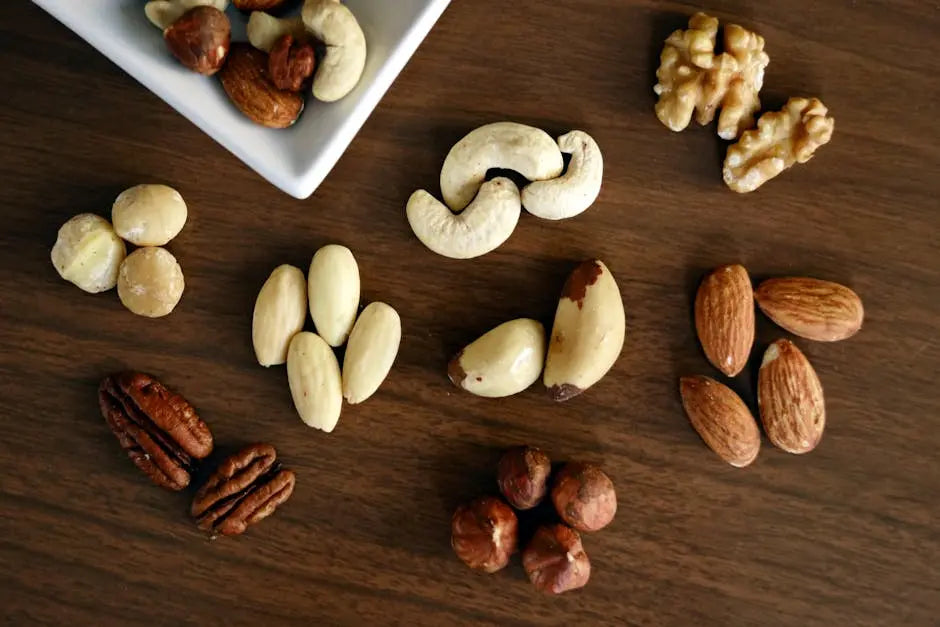
Understanding What Makes Cat Food Nutritious and Delicious
Cats are more than just pets; they are family members that deserve the best care, including a nutritious and delicious diet. Understanding what makes cat food nutritious and delicious is essential for ensuring the health and happiness of your feline friend. In this blog, we’ll explore the key ingredients, nutritional needs, and factors that contribute to appealing cat food.
The Importance of Balanced Nutrition for Cats
Just like humans, cats need a balanced diet to thrive. Proteins, fats, carbohydrates, vitamins, and minerals play critical roles in maintaining their energy levels and overall health. Understanding the ideal nutritional balance is the first step in providing the best diet for your feline friend. Proteins are particularly vital for cats as they are obligate carnivores, meaning they need a diet rich in animal protein to meet their unique nutritional demands. Unlike dogs, cats have evolved to derive most of their energy from proteins and fats rather than carbohydrates.
Fats in a cat’s diet aren’t just for energy; they are also important for the absorption of fat-soluble vitamins. Omega fatty acids, in particular, are beneficial for maintaining a healthy coat and skin. Carbohydrates, while not a primary energy source, can still play a role by providing dietary fiber which aids in digestive health. It’s essential that your cat’s diet is also fortified with vital vitamins and minerals. For instance, taurine, an amino acid, is crucial for heart and eye health, and a deficiency can lead to severe health issues.
Key Ingredients to Look for in Cat Food
Identifying the right ingredients is crucial for your cat’s health. High-quality protein sources such as chicken and fish are essential for muscle development. When choosing cat food, always check for real meat as the first ingredient to ensure that your cat receives a diet high in quality protein. In addition, natural fats and oils provide essential fatty acids that support skin and coat health. For optimal benefits, it’s advantageous to look for foods enriched with omega-3 and omega-6 fatty acids.
Vitamins such as A, D, E, and K should also be present in their diet, supporting various body functions from vision to the immune system. Minerals like calcium and phosphorus work together to support bone health, while sodium and potassium balance fluid levels in a cat’s body. The integration of fruits and vegetables can provide necessary antioxidants, though it’s critical to ensure these are in small amounts since felines can’t digest plant matter as efficiently as proteins. Always check the label to see if these ingredients align with your cat’s specific requirements.
Another standout ingredient that is beneficial for specific needs, such as urinary health, is cranberries. They can help prevent urinary tract infections. Meanwhile, Forza10 Actiwet Renal Support Canned Cat Food is an excellent example for cats with particular dietary needs, like those with renal issues. It is formulated with Icelandic salmon and lamb, specifically designed to manage renal health while providing essential proteins and therapeutic ingredients.
Understanding Your Cat’s Specific Nutritional Needs
Each cat is unique, with varying nutritional requirements based on age, activity level, and health conditions. Kittens, adults, and senior cats all benefit from tailored diets to meet their specific energy and nutrient needs. Younger cats, especially kittens, require diets rich in protein and fat to support their rapid growth and energy needs. As cats transition into adulthood, their calorie needs shift, requiring more maintenance nutrients to preserve muscle mass and prevent obesity.
Senior cats, on the other hand, may need diets that are lower in calories yet still rich in nutrients to cater to reduced activity levels and aging metabolic systems. Special diets are also necessary for cats with health conditions. For instance, cats diagnosed with diabetes or kidney issues may need specially formulated diets to manage their conditions effectively. Brands like Petature’s collection of cat foods offer options for varying needs, including grain-free or gluten-free meals that are perfect for cats with sensitivities.
For cats suffering from conditions like obesity or diabetes, choosing a diet low in carbohydrates and high in protein is essential. As highlighted by nutrition experts, a high-protein diet with low carbohydrates can help manage weight effectively and prevent insulin spikes, which are crucial for diabetic cats. It’s important to adjust the diet according to the veterinarian’s recommendations to ensure your cat receives the precise nutrition it needs throughout its life.
Making Cat Food Appealing: Taste and Texture
Even the most nutritious cat food is ineffective if your cat refuses to eat it. Cats are often picky eaters, so the taste and texture of their food matter. Discover how food formulations and flavors enhance appeal, ensuring your cat enjoys every meal while receiving all essential nutrients. The aroma of the food is particularly significant as cats find strong, pungent smells enticing, often guiding them to try the food. Pet food manufacturers are now crafting recipes that emulate the textures and flavors of a cat’s natural prey.
Each feline has its own preference regarding the consistency of its meals. Some may prefer the moisture and softness of wet food, while others might enjoy the crunch of dry kibble. Offering a mix of both can sometimes satisfy the finickiest of eaters while also providing varied nutritional benefits. Wet food like Forza10’s Actiwet line is not only delicious but also provides added hydration, which is beneficial for promoting urinary health.
Texture play a major role in how much a cat enjoys its food, so experimenting with different types can help identify what your cat enjoys the most. Additionally, it’s been observed that some cats prefer foods with certain shapes, such as those resembling their natural prey. Consistently providing appealing flavors and textures can make mealtime a more satisfying experience for your feline friend and ensure they receive the nutrients they need.
Reading and Understanding Cat Food Labels
Deciphering cat food labels can be challenging, but it’s crucial for making the right choices. Learn how to read and understand labels, identify misleading claims, and ensure you’re selecting high-quality food when shopping for your feline companion. By law, pet food labels must list ingredients in order of weight, with the heaviest listed first. When assessing protein content, look for specific meats or meat meals rather than by-products, which might not offer the same quality of nutrients.
Processing techniques play a role in final nutrient content, so foods processed minimally tend to maintain more of their natural vitamins and minerals. Always consider the guaranteed analysis which provides information on the product’s nutrient content. Creating a balanced meal for your cat is easier with products that state the inclusion of necessary vitamins and minerals such as taurine, calcium, and vitamin A. Using resources like this guide on choosing cat food can assist in discerning which labels reflect quality and balanced nutrition.
Moreover, be wary of marketing terms like ‘premium’ or ‘gourmet’ which do not have a legal definition, and might not necessarily indicate superior quality. Always look past the buzzwords to understand what the core nutrients and ingredients offer your cat. Ensuring that a food provides a complete and balanced diet will help maintain your cat’s overall health and keep them satisfied. For instance, if your cat has specific dietary needs, there are tailored products available, such as CARU’s Functional Human Grade Pet Food, which emphasize using human-grade ingredients to enhance nutrition and flavor.
Nourish Your Cat with the Best
Choosing the right cat food can have a significant impact on your cat’s health and well-being. By understanding the essential components of nutritious and delicious cat food, you can make informed decisions that cater to your cat’s unique needs. Remember, a healthy cat is a happy cat.

